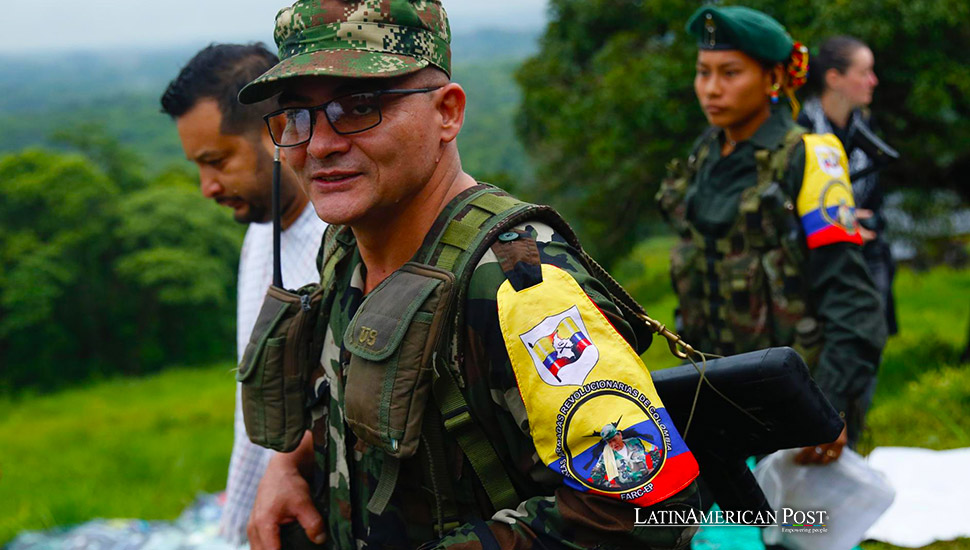Why Colombia’s ‘Total Peace’ Plan Is Unlikely to Succeed in 2024

Colombia’s ambitious ‘Total Peace’ initiative faces significant challenges, making its realization in 2024 improbable. Factors such as ongoing violence, complex negotiations, and political obstacles hinder progress toward a comprehensive and lasting peace.
Colombia’s ambitious ‘Total Peace’ initiative faces significant challenges, making its realization in 2024 improbable. Factors such as ongoing violence, complex negotiations, and political obstacles hinder progress toward a comprehensive and lasting peace.
The Colombian government’s recent decision to resume offensive operations against the National Liberation Army (ELN) following the end of the most extended bilateral ceasefire is a significant setback in the peace negotiations. This decision, announced by Defense Minister Iván Velásquez, was made without an active ceasefire, as instructed by the commander of the Armed Forces, Admiral Francisco Cubides, and the police chief, General William Salamanca.
The ceasefire, which took effect on August 3, 2023, and was extended for another 180 days, aimed to foster stability and advance President Gustavo Petro’s vision of ‘total peace.’ However, the peace process remains frozen, with the ELN demanding a presidential decree to remove them from the list of organized armed groups (GAO). Velásquez acknowledged that this request could be a topic for discussion but emphasized that the government had not yet deliberated on the matter.
The ELN claims to have adhered to the ceasefire, ceasing kidnappings for economic purposes and blames the government’s failure to honor agreements for the stalled peace talks. Despite multiple calls from various organizations and stakeholders for a renewed commitment to the ceasefire, the path to ‘total peace’ remains fraught with obstacles.
The Complexity of ‘Total Peace’
President Petro’s ‘Total Peace’ policy, enshrined in Law 2272 of November 4, 2022, defines peace as a state priority. It encompasses both the implementation of existing agreements and new negotiations with illegal armed groups. The policy aims to address conflicts with groups like the ELN, FARC-EP dissidents, and high-impact criminal organizations such as the Gulf Clan.
The National Development Plan, approved in May 2023, underscores peacebuilding as central to the government’s agenda. It focuses on transforming coca-growing areas, transitional justice, and investing in affected municipalities. However, critics argue that the ‘Total Peace’ agenda is overly ambitious, given the entrenched nature of violence and the myriad groups involved.
Prominent figures like Sergio Jaramillo and Humberto de la Calle, who played critical roles in the previous peace process with the FARC-EP, have expressed skepticism about the feasibility of ‘Total Peace.’ They highlight the immense challenges of eradicating coca crops, the lack of security measures to protect signatories of the Havana Agreement, and the dangers posed by hitmen and armed groups.
The ELN, too, has voiced concerns about the policy, particularly regarding the government’s approach to negotiating with both political and criminal armed groups. The ELN criticizes the policy for equating groups driven by profit motives with those engaged in political struggle, arguing that such comparisons undermine the legitimacy of their cause.
Furthermore, the law mandates a territorial approach to peace, recognizing Colombia’s diverse and localized nature of violence. The creation of ‘peace regions’ aims to support civil society’s role in negotiations and implement programs to address conflict-specific issues. However, the effectiveness of this approach remains to be determined, given the persistent presence of armed groups and the state’s limited capacity to enforce peace.
Prospects for 2024
Despite the government’s efforts, the realization of ‘Total Peace’ in 2024 appears unlikely. The resumption of military operations against the ELN and the stalled negotiations reflect the deep-rooted challenges that impede progress. The complexity of engaging multiple armed groups with varying motivations further complicates the peace process.
Moreover, the political climate in Colombia adds another layer of difficulty. President Petro’s administration faces significant opposition, and implementing the peace agenda requires broad political and public support. The recent violence and ongoing security issues also undermine confidence in the government’s ability to achieve lasting peace.
While the goal of ‘Total Peace’ is laudable, its execution requires a pragmatic and multifaceted approach. The government must prioritize building trust with armed groups through transparent and consistent engagement. Additionally, addressing the socioeconomic root causes of conflict, such as poverty and inequality, is essential for sustainable peace.
Investing in education and public awareness campaigns can foster a culture of peace and non-violence. Strengthening institutions and ensuring that justice is served for victims of violence are also critical steps. By taking a holistic approach and involving all stakeholders, Colombia can make incremental progress towards peace, even if the ultimate goal of ‘Total Peace’ still needs to be reached soon.
Also read: Colombia’s President Advocates for Health and Labor Reforms at Congressional Opening
While the aspiration for ‘Total Peace’ in Colombia is commendable, the numerous challenges and complexities make its achievement in 2024 unlikely. The government must continue to work diligently towards peace, learning from past experiences and adapting its strategies to address the evolving landscape of conflict in the country.





